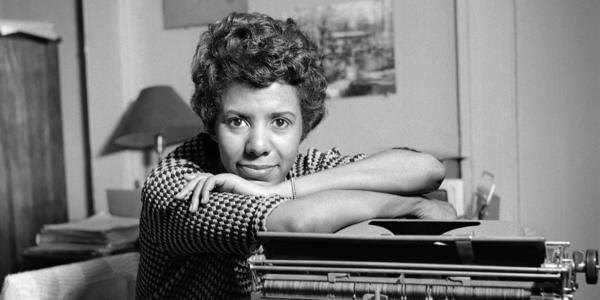Bound for PBS’s American Masters, the bio-documentary of writer Lorraine Hansberry, Sighted Eyes/Feeling Heart, is one of the best additions to the series and among the strongest documentaries at the Toronto International Film Festival, where it had its world premiere.
With more candor and depth than is usual for the series, director Tracy Heather Strain nimbly blends the bio of the first African American woman to have had a play produced on Broadway with her involvement in and reaction to the times. She died at 34 in 1965.
The years-in-the-making film benefits enormously from the participation of actors Ruby Dee (who recently died in 2014), Louis Gossett Jr., and Sidney Poitier, all of whom appeared in the original 1959 Broadway production of A Raisin in the Sun; Harry Belafonte; and Lorraine’s sister Mamie. The film takes a no-nonsense approach to her political beliefs, with Poitier declaring emphatically that Hansberry was a left-wing radical and proud of it.
She was brought up in relatively well-to-do circumstances in the South Side of Chicago. Her father, Carl A. Hansberry, was a real estate broker who rented to African Americans arriving in the Windy City during the Great Migration. In 1937, her father bought a house in a white residential neighborhood and challenged the restricted covenant laws in place. The case went all the way to the Supreme Court in 1940, Hansberry v. Lee: the housing law remained, but 500 black families were allowed to move into the neighborhood.
As a 20-year-old college dropout, Hansberry moved to Harlem and began working on the leftist newspaper Freedom, joined the Communist Party, and was mentored by W.E.B. Du Bois and Paul Robeson, among others. During that time, she also came under the surveillance of the FBI. Two important works shaped the focus of what was to become her career: Simone de Beauvoir’s landmark book The Second Sex and Seán O’Casey’s play of a working-class Irish family set during the 1920s Irish Civil War, Juno and the Paycock.
As luck would have it, she was able to devote herself to writing full-time when her husband, Bob Nemiroff, who was white and Jewish, earned royalties for co-writing a hit song sung by Eddie Fisher, “Cindy, Oh Cindy.” It was record producer Philip Rose who put up the money, and as a theater novice, became the producer of the seminal A Raisin in the Sun. The remarkably prescient play, in which an African American family living on Chicago’s South Side considers moving into a white neighborhood, holds up beautifully decades later, thanks to its naturalistic writing, universality, and confrontation of issues that remain relevant.
Though the film’s few reenactments (a frustrated Hansberry throwing sheets of paper into the air) add little to the overall narrative, most of the running time is devoted to the thoughtful interviews that are accompanied by archival footage and Hansberry’s audio recordings and home movies. One gem is an excerpt from an unaired exchange with interviewer Mike Wallace, who bluntly asks her to respond to criticism that she had won awards largely because of her gender and race.
The wide-ranging profile gives nearly equal time to Hansberry’s politics as it does to her feminism and her lesbianism. (In fact, she was friends with Edith Windsor, the plaintiff of the Supreme Court case that legalized gay marriage, who died last week.) What may be unknown to many viewers is that Hansberry wrote fiction for a lesbian journal, The Ladder, and was a member of Daughters of Bilitis, the first lesbian rights group. Nor does the film soften her political views, especially regarding the violent attacks upon the civil rights movement; she felt that if white liberals really wanted to change the country, they would become radicalized.
When the film is eventually released on DVD, it will be a must-have for American studies collections in high schools and colleges, and for PBS viewers, it’s one to look out for. The timing of a film centered on a questioning and confronting artist/activist is on the mark.







Leave A Comment